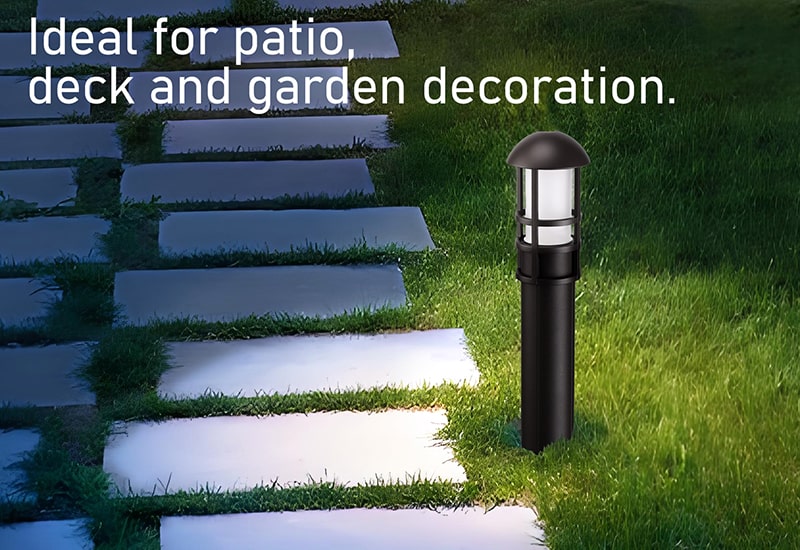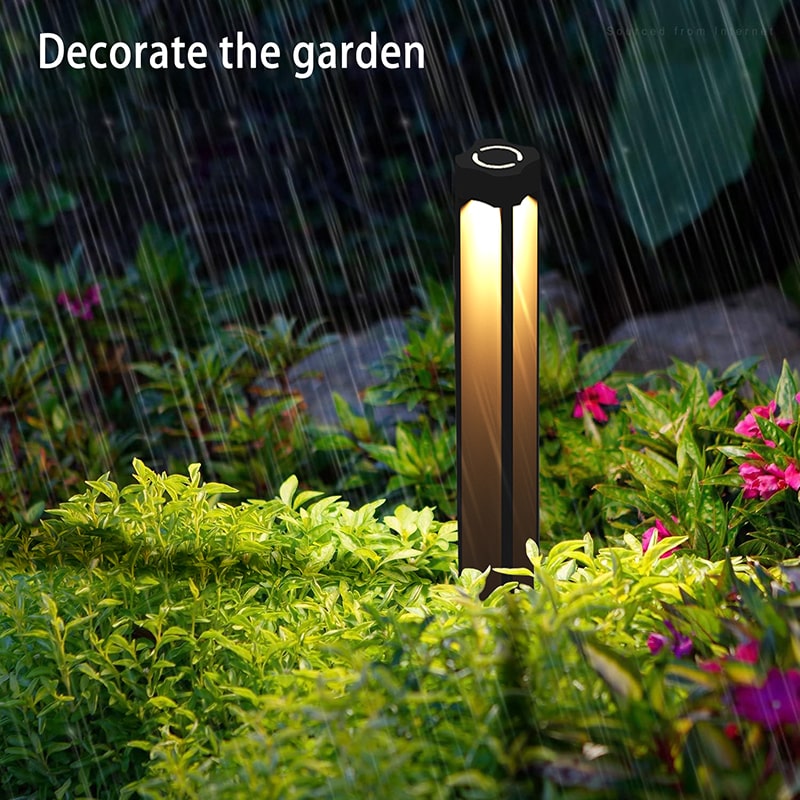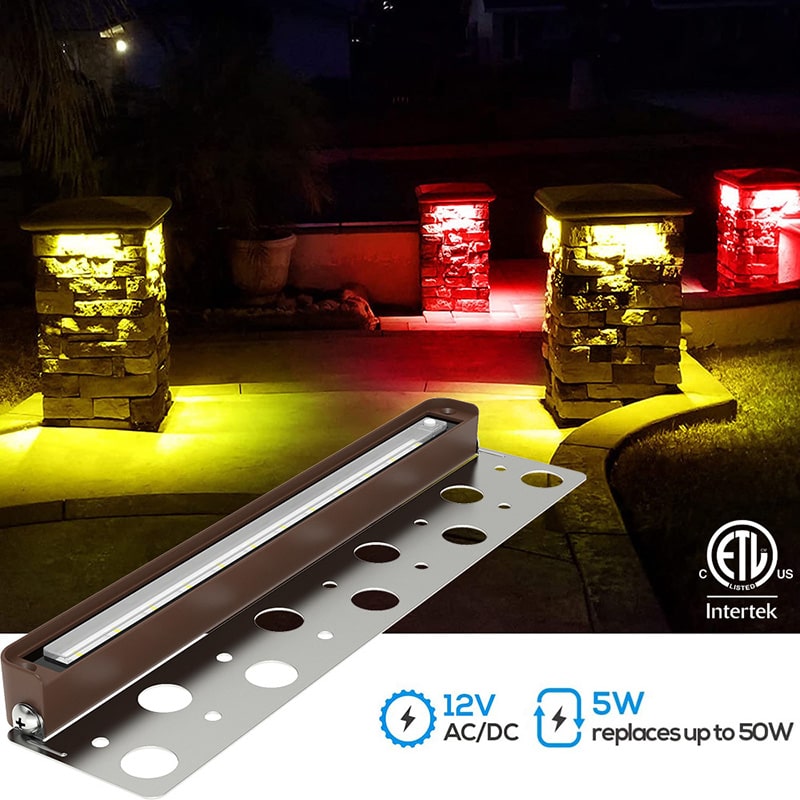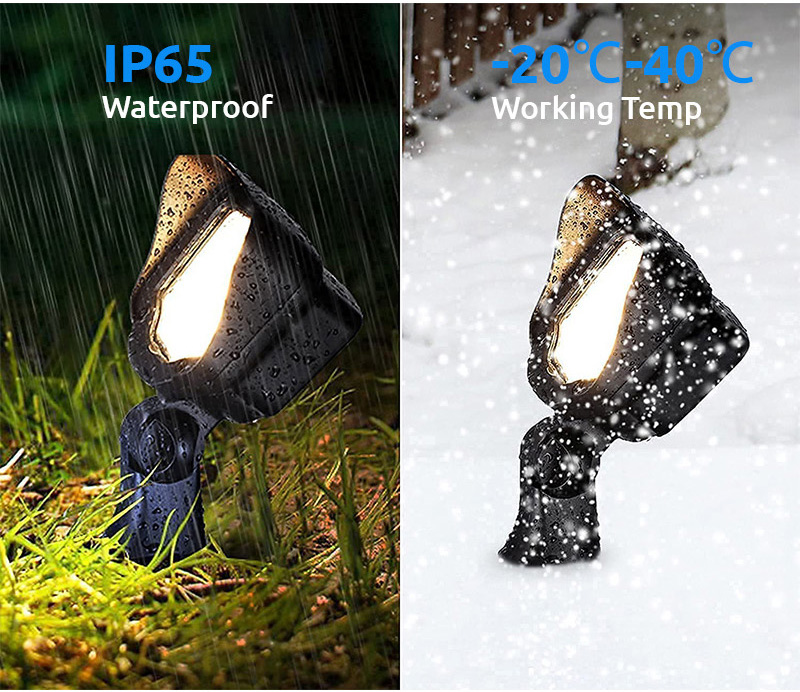
Established in 2007 | Factory Area 5000 sqm | Annual Export US $10,000,000

Outdoor lighting enhances the beauty and security of your yard, especially with landscape lights. Proper illumination highlights landscape features and deters intruders. Low voltage landscape lights offer significant benefits. These lights consume less energy and last longer. Superior illumination quality makes them a popular choice. By 2027, widespread use of LEDs could reduce electricity use equal to the output of 44 large power plants. Total savings could exceed $30 billion. Choosing low voltage landscape light options ensures efficiency and safety for your outdoor spaces.

Definition and Basics
Low voltage lighting operates at 12 volts. This system uses a transformer to reduce the standard 120-volt power from your home. The transformer converts the power to a safer 12-volt level. Low voltage lights provide efficient and effective illumination for outdoor spaces.
Comparison with High Voltage Lighting
High voltage lighting requires 120 volts of power. These lights are common in commercial and security settings. High voltage systems often need a licensed electrician for installation. Low voltage lighting, on the other hand, is DIY-friendly. You can install low voltage lights without professional help. Low voltage systems also minimize the risk of electrical shock.
Energy Efficiency
Low voltage lights consume less energy. These lights use fewer watts compared to high voltage lights. Reduced energy consumption leads to lower electricity bills. Low voltage systems also support the use of LED bulbs. LED bulbs last longer and save more energy.
Safety
Low voltage lighting enhances safety. The 12-volt system reduces the risk of electrical shock. You can safely install and maintain these lights. Low voltage wires can be buried directly without conduit. This feature simplifies the installation process.
Versatility
Low voltage lighting offers versatility. You can use these lights for various outdoor applications. Path lights, spotlights, and deck lights all operate on low voltage systems. These lights also come in different styles and designs. You can easily find options that match your landscape aesthetics.

Features and Uses
Path lights illuminate walkways, driveways, and garden paths. These lights enhance safety by making it easier to navigate outdoor spaces at night. Path lights also add an aesthetic touch to your landscape. Many path lights sit on top of the ground and cast light upward. This design spreads soft, gentle illumination without glare.
Popular Styles
Path lights come in various styles to match different home and garden aesthetics. Mushroom and pagoda styles offer a traditional look. Hat LED pathway lights provide a modern appearance. Each style enhances the beauty and functionality of your outdoor space.

Features and Uses
Spotlights focus intense light on specific features. Use spotlights to highlight trees, statues, or architectural elements. These lights create dramatic effects and draw attention to focal points in your yard. Spotlights are versatile and can be adjusted to different angles.
Popular Styles
Spotlights come in several styles to suit various needs. Bullet spotlights have a sleek, cylindrical shape. Flood spotlights spread light over a wider area. Both styles offer powerful illumination for highlighting key features in your landscape.

Features and Uses
Deck and step lights improve safety and visibility on stairs and decks. These lights prevent tripping hazards by illuminating steps and edges. Deck and step lights also create a warm, inviting atmosphere for outdoor gatherings.
Popular Styles
Deck and step lights are available in many designs. Recessed lights fit flush with surfaces, providing a clean look. Surface-mounted lights attach directly to steps or deck boards. Both styles offer effective and attractive lighting solutions for your outdoor spaces.

Features and Uses
Floodlights provide broad illumination for large outdoor areas. These lights enhance security by deterring intruders. Floodlights also improve visibility in driveways, backyards, and patios. The wide beam angle covers extensive spaces, making floodlights ideal for illuminating large sections of your yard. Low voltage floodlights offer the safety and convenience of a 12-volt system. This feature allows for easy installation and maintenance.
Popular Styles
Floodlights come in various styles to suit different needs. Bullet floodlights have a sleek, cylindrical shape that blends well with modern landscapes. Box floodlights offer a more traditional look, providing robust and durable lighting solutions. Both styles deliver powerful illumination, enhancing the beauty and security of your outdoor spaces.
Functional Lighting
Functional lighting ensures safety and visibility in your yard. Path lights illuminate walkways, driveways, and garden paths. Deck and step lights improve safety on stairs and decks. Floodlights provide broad illumination for large areas. Proper functional lighting reduces the risk of accidents and enhances security.
Aesthetic Lighting
Aesthetic lighting highlights landscape features and creates ambiance. Spotlights focus on trees, statues, or architectural elements. Path lights add a decorative touch to garden paths. Deck and step lights create a warm atmosphere for outdoor gatherings. Aesthetic lighting enhances the beauty of your yard.
Lumens and Wattage
Lumens measure the brightness of a light. Higher lumens mean brighter light. Wattage indicates energy consumption. Low voltage landscape lights use fewer watts but provide sufficient lumens. LED bulbs offer high lumens with low wattage. This combination ensures energy efficiency and bright illumination.
Appropriate Brightness Levels
Different areas require different brightness levels. Path lights need moderate brightness for safe navigation. Spotlights require higher brightness to highlight features. Floodlights need the highest brightness for broad illumination. Choose appropriate brightness levels based on the area and purpose.
Material Considerations
Choose durable materials for landscape lights. Brass and copper offer high durability and resistance to corrosion. Stainless steel provides strength and a modern look. Plastic options are budget-friendly but less durable. Select materials that withstand outdoor conditions and match your landscape design.
IP Ratings
IP ratings indicate weather resistance. The first digit shows protection against solids like dust. The second digit shows protection against liquids like water. Higher IP ratings mean better protection. For outdoor use, choose landscape lights with an IP rating of at least IP65. This rating ensures durability in various weather conditions.
Installing low voltage landscape lights offers a straightforward process. You can complete this task without professional help. Begin by planning the layout of your lights. Mark the spots where you plan to place each light. A clear plan ensures an organized installation.
Next, set up the transformer. The transformer reduces the standard 120-volt power from your home to a safer 12-volt level. Mount the transformer near an outdoor outlet. Ensure the transformer stays protected from weather elements.
Run the low voltage cables from the transformer to each light fixture. Bury the cables a few inches underground. This step keeps the cables safe from damage. Connect the cables to the light fixtures using waterproof connectors. These connectors prevent moisture from causing electrical issues.
Finally, test the system. Turn on the transformer and check each light. Make adjustments to the light placement if needed. Proper testing ensures that your lighting system works efficiently.
Maintaining low voltage landscape lights involves simple steps. Regular maintenance keeps your lights functioning well. Start by cleaning the light fixtures. Dirt and debris can reduce the brightness of the lights. Use a soft cloth to wipe the fixtures clean.
Check the connections regularly. Loose or corroded connections can cause the lights to malfunction. Tighten any loose connections and replace corroded ones. Inspect the cables for damage. Replace any damaged cables to maintain the safety of the system.
Replace bulbs as needed. LED bulbs last longer than traditional bulbs but will eventually need replacement. Follow the manufacturer’s instructions for replacing bulbs. Ensure that you use compatible bulbs for your fixtures.
Monitor the transformer. The transformer should remain in good working condition. Check for signs of wear or damage. Replace the transformer if it shows significant wear. A well-maintained transformer ensures efficient power supply to your lights.
By following these steps, you can enjoy a beautifully illuminated yard with minimal effort. Proper installation and maintenance enhance the longevity and performance of your low voltage landscape lighting system.
Mapping Out Your Yard
Start by drawing a map of your yard. Include all major features such as trees, pathways, and patios. Mark the areas where you want to install lights. This visual plan helps you understand the layout better.
Deciding on Light Placement
Decide where to place each light based on the map. Place path lights along walkways and driveways. Position spotlights to highlight trees or statues. Install deck and step lights on stairs and edges. Ensure that floodlights cover large areas like backyards.
Choosing the Right Transformer
Choose a transformer that matches the total wattage of your lights. Add up the wattage of all your low voltage lights. Select a transformer with a wattage rating higher than the total. This ensures efficient power supply.
Safe Wiring Practices
Follow safe wiring practices to avoid electrical issues. Use waterproof connectors to join cables. Bury the cables a few inches underground to protect them. Avoid placing cables near water sources. Always turn off the power before handling wires.
Testing and Adjusting
Initial Testing
Test your lighting system after installation. Turn on the transformer and check each light. Ensure that all lights work properly. Look for any flickering or dim lights.
Making Adjustments
Make adjustments to improve the lighting effect. Move lights to better positions if needed. Adjust the angle of spotlights for optimal focus. Ensure that path lights provide even illumination. Proper adjustments enhance the overall appearance of your yard.